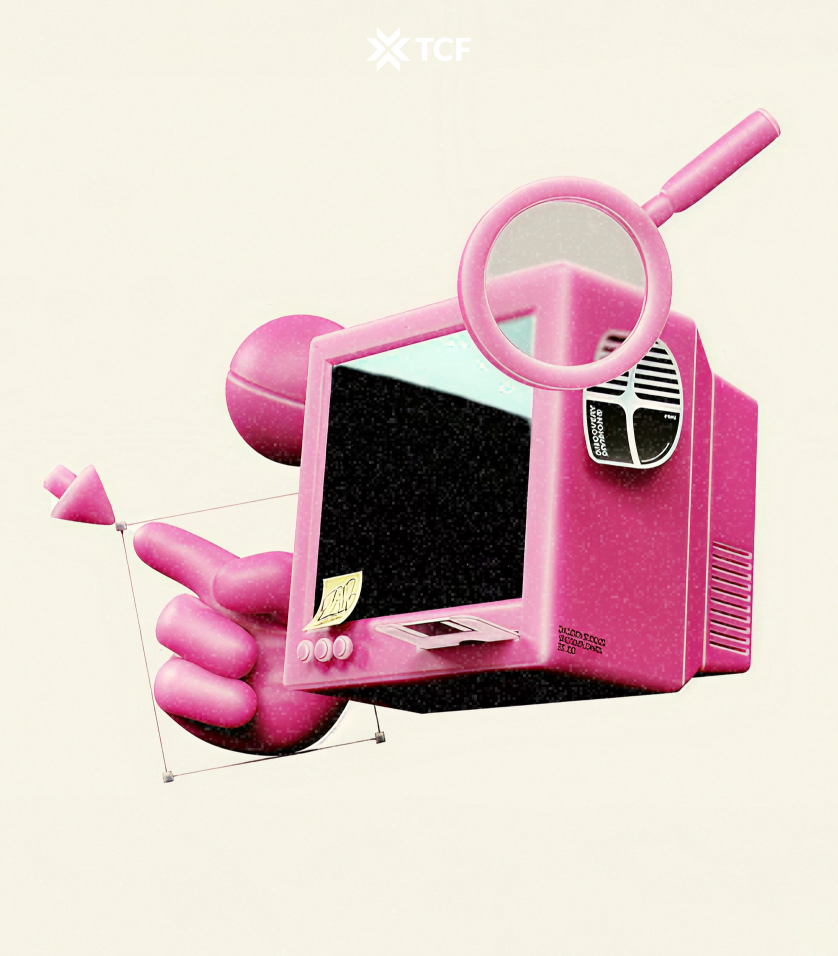Your Kickstarter or Indiegogo campaign is wrapped. The funding’s in, your backers are thrilled, and you’ve officially proven the world wants what you’ve built. For a moment, you get to bask in the glow of success… until you realize you’ve got hundreds (or thousands) of orders to ship, a store to set up, and a very impatient spreadsheet wondering about cash flow.
This is the point where momentum can disappear faster than your first batch of inventory. Without the built-in urgency of a countdown clock, sales can stall, interest can fade, and your to-do list can start looking like a second campaign you didn’t mean to launch.
We’ll explore how the move from crowdfunding to ecommerce changes the game, the actions that protect and grow your momentum, the mistakes that can sink progress, and examples from creators who’ve made the jump and thrived.
By the end, you’ll have a roadmap you can use to turn campaign energy into lasting success.
[[cta5]]
Crowdfunding vs. Ecommerce: Understanding the Shift
Running a crowdfunding campaign and running an online store might involve selling the same product, but the environment, audience, and pace are very different.
On Kickstarter or Indiegogo, you’re selling an idea supported by a story. Visitors arrive ready to discover something new, willing to wait months for delivery, and often forgiving of small imperfections if they believe in your vision.
In ecommerce, the expectations shift:
- Customers want polished branding, clear product information, and competitive pricing
- Fast, reliable shipping and an easy buying experience are non-negotiable
- Reviews, availability, and delivery speed can matter as much as your story
The rhythm changes too:
- Crowdfunding is a sprint toward one big deadline
- Ecommerce is a marathon that demands consistent marketing, ongoing fulfillment, and scalable operations
Recognizing these differences early makes it easier to adapt your approach and to focus on building the systems that keep sales steady long after your campaign page goes quiet.
What to Do After a Successful Crowdfunding Campaign
Crowdfunding gives you funding, validation, and an audience. But once the campaign ends, you need a plan for keeping momentum, building trust with backers, and creating systems that will carry you into steady ecommerce growth.
The steps below will take you from that final campaign update to a store that sells consistently, a customer base that sticks around, and operations built for the long haul.
Step 1: Master Fulfillment and Build Customer Trust
Your first priority after a successful campaign is simple: get rewards into your backers’ hands. Fulfillment is the foundation of your reputation.
Backers supported you before your product was proven. How you handle this stage determines whether they’ll buy from you again, recommend you to others, or warn people to stay away.
Key actions to protect trust:
- Be transparent about timelines: even if there are delays, proactive updates build goodwill
- Double-check product quality before shipping: small fixes now are cheaper than handling returns later
- Use tracking and clear communication so backers know when to expect their orders
- Handle problems fast: missing packages, damaged items, or wrong variants should be resolved with minimal friction
If you’re still in production, keep the momentum alive by:
- Sharing behind-the-scenes updates and progress photos
- Involving backers in small decisions (like packaging options) to keep them engaged
- Offering early-bird discounts or perks for follow-up purchases once your store is live
Trust is a long game. Fulfill smoothly, and you’ll have a base of early customers ready to support your next step into ecommerce. Drop the ball, and you’ll spend more time repairing your reputation than growing your sales.
Step 2: Keep Sales Flowing With InDemand, Pre-Orders and Store Setup
A campaign deadline is great for urgency, but when it ends, you don’t want your sales to flatline while you’re still fulfilling orders. The goal here is to give people a way to buy or at least commit while your product is still fresh in their minds.
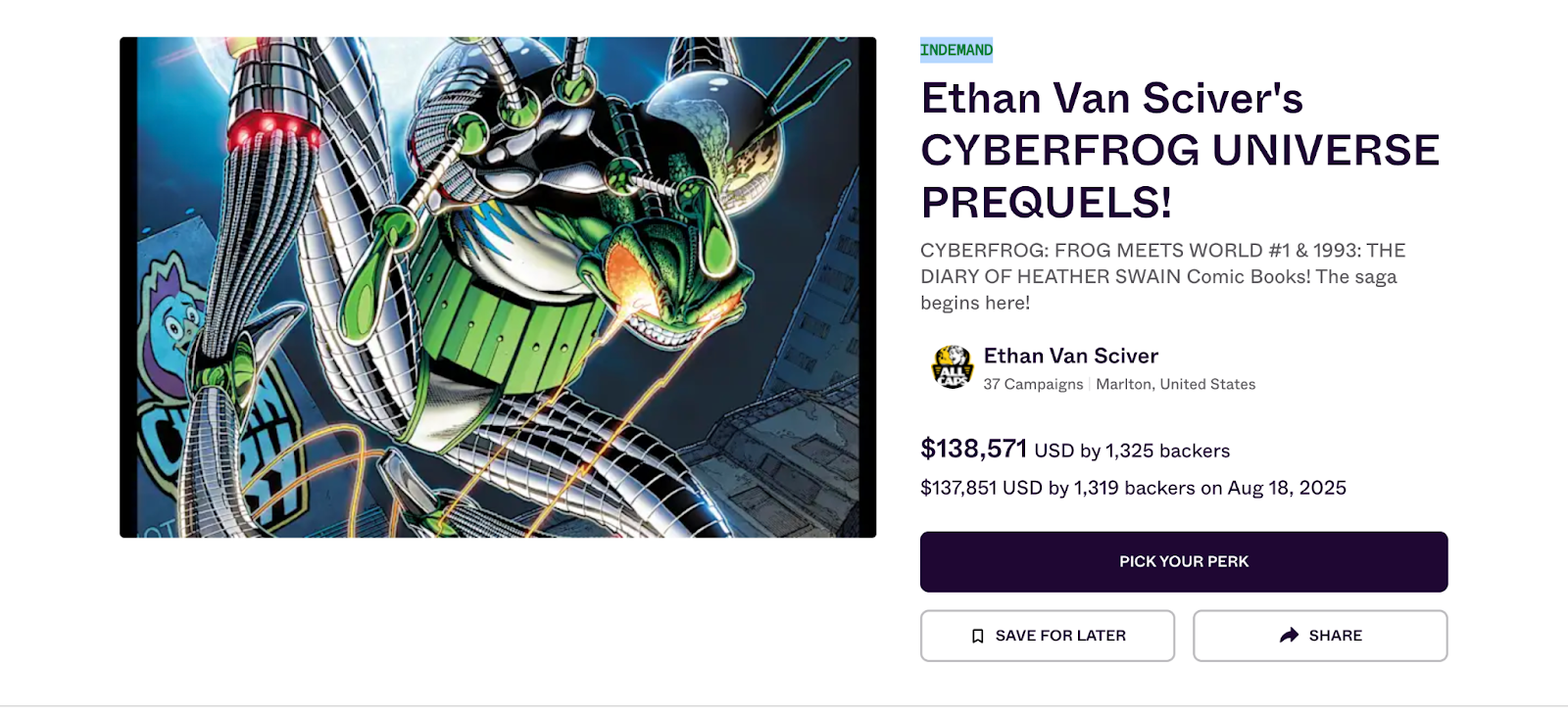
Options to keep revenue coming in:
- Indiegogo InDemand: If you launched on Kickstarter, you can move to InDemand after the campaign ends. It lets you keep taking orders using your existing campaign assets while you set up your store.
- Kickstarter Late Pledges: Kickstarter now allows creators to continue taking pledges after the live campaign ends, similar to Indiegogo’s InDemand. It keeps your campaign page active for latecomers who still want in, and lets you capitalize on the momentum you’ve already built.
- Pre-orders on your own site: Launch a "coming soon" or pre-order page so customers can reserve a product before it’s ready to ship. Clearly state expected delivery dates to avoid confusion.
- Branded landing page: Even if your store isn’t live yet, have a page ready to collect emails from interested customers. This list becomes a powerful tool when you open for sales.
Key points to make it work:
- Keep the buying process simple: too many steps and people will drop off
- Be clear about shipping timelines: retail buyers won’t wait as long as backers
- Use every update, social post, or PR mention to direct people to your active sales channel
- Share early backer reviews (video or written): highlight that first wave of happy customers to reassure newcomers that orders are being delivered and enjoyed
By keeping a door open for new customers, you turn post-campaign buzz into immediate revenue and make the eventual jump to full ecommerce smoother. It’s easier to maintain momentum than to try to restart it after weeks of silence.
Step 3: Build a Conversion-Ready Storefront
Once you’ve kept sales channels open, the next step is to create an online store that looks good and turns visitors into paying customers. This means choosing the right platform, designing for ease of use, and setting up the basics that help people find you. Treat this as your first round of ecommerce optimization, because the sooner you get conversion-friendly elements in place, the harder every marketing dollar will work.
Choose a platform built for growth:
- Shopify: Popular for its ease of setup, scalability, and wide app ecosystem
- WooCommerce: Flexible and highly customizable for those already on WordPress
- Consider starting on your own domain even if you also sell on Amazon or other marketplaces
Prioritize a seamless customer experience:
- Clear, concise product pages with detailed descriptions and quality images
- Simple navigation so customers can find what they need in one or two clicks
- Mobile-friendly design: most online shopping happens on phones
- Fast load times: even a few seconds of delay can cost you sales
Lay the foundation for discoverability:
- Basic SEO setup with clear titles, meta descriptions, and product descriptions
- A blog or resource section for content that answers common customer questions and attracts organic traffic
- Reviews or testimonials, ideally from backers, to add trust from day one
A well-built store is your primary sales engine. When it works well, every marketing effort you make (ads, social posts, PR) will convert more visitors into buyers.
Step 4: Keep Backers Engaged (Email, Exclusives, Community)
Backers are your most invested early customers. If you stay connected and give them reasons to come back, they can become your most loyal buyers and vocal advocates.
Use email as your main channel:
- Send regular updates on production, shipping, and new launches
- Share early access links or exclusive discounts for repeat purchases
- Segment your list so you can tailor messages to backers versus new customers
Offer perks that feel special:
- Limited-edition variants or bundles available only to backers
- Early access to new products before the public launch
- Invitations to beta test or give feedback on upcoming ideas
Create a space for ongoing community:
- Private Facebook Group, Discord server, or forum for backers
- Share behind-the-scenes content they can’t get anywhere else
- Encourage user-generated content by featuring their photos or reviews
The key is to keep showing up in ways that add value. Consistent, genuine communication builds loyalty, and loyal customers are the foundation of long-term ecommerce growth.
Step 5: Attract New Customers (Ads, Influencers, PR, Partnerships)
Backers give you a strong starting point, but long-term growth depends on reaching new audiences. This means getting intentional about how you market beyond your existing community. If you don’t have the time or expertise in-house, consider partnering with an ecommerce marketing agency to accelerate results.
Run targeted paid ads:
- Start with small, test-focused budgets to see which creatives and audiences convert
- Use your backer list to create lookalike audiences on Meta Ads or Google
- Retarget site visitors who didn’t purchase with tailored offers
Leverage influencer and affiliate marketing:
- Send product samples to creators in your niche and encourage honest reviews
- Work with micro-influencers (5k–50k followers) for high engagement rates
- Offer affiliate commissions to incentivize long-term promotion
Use PR to build credibility:
- Pitch your campaign success story to industry blogs, podcasts, or local media
- Highlight your crowdfunding stats ("1,500 backers in 30 days") as social proof
- Link media coverage prominently on your site and in marketing
Form strategic partnerships:
- Collaborate with complementary brands for giveaways or bundles
- Cross-promote to each other’s audiences to expand reach without extra ad spend
You should combine quick-win channels like ads with slower-burn strategies like PR and partnerships, so you’re not relying on a single source of traffic. Diversifying how people discover you makes your sales more resilient over time.
Step 6: Upgrade Your Operations (3PL, Inventory, Global Logistics)
Crowdfunding fulfillment is usually a one-time push. Ecommerce requires ongoing systems that can handle orders consistently without burning you out. This is where upgrading your operations comes in.
Decide on your fulfillment model:
- Self-fulfillment works for low order volumes and keeps costs down in the short term
- Third-party logistics (3PL) providers handle storage, picking, packing, and shipping at scale
- Choose partners based on speed, reliability, and integration with your store platform
Plenty of creators try to keep fulfillment in-house too long. By the time demand spikes, they’re buried under shipping labels and customer emails. Moving to a 3PL earlier than you think can save your sanity and your brand reputation.
Stay on top of inventory:
- Use tools or apps to track stock levels in real time
- Set reorder points so you restock before running out
- Keep a buffer for unexpected spikes in demand or shipping delays
Plan for international orders:
- Regional warehouses can cut costs and delivery times for global customers
- Be clear about duties and taxes: unexpected fees hurt the customer experience
- Consider Delivered Duty Paid (DDP) shipping to simplify international sales
Strong operations keep your orders moving, protect your reputation, improve customer satisfaction, and free you up to focus on growth instead of chasing shipping issues.
Step 7: Plan Your Finances for Growth (Cash Flow, Restocking)
Crowdfunding gives you a lump sum to work with, but ecommerce is all about ongoing cash flow. Without careful planning, you can run into inventory gaps, stalled marketing, or worse, no budget to keep the business moving.
Map out your post-campaign budget:
- Factor in production costs, shipping, marketing, platform fees, and taxes
- Reserve a portion of funds for your first restock before you run out of inventory
- Keep a cushion for unexpected expenses or slower sales months
Track your unit economics:
- Know your customer acquisition cost (CAC), average order value (AOV), and lifetime value (LTV)
- Make sure your margins cover both product costs and marketing spend
- Adjust pricing if necessary to stay profitable outside the campaign environment
Plan for restocking cycles:
- Work backwards from production lead times to avoid stockouts
- Order in smaller, more frequent batches if cash is tight
- Secure financing options early if you’ll need capital for large purchase orders
Solid financial planning isn’t exciting, but it’s what keeps your store running, your marketing active, and your customers happy. Without it, even the most successful launch can fizzle out fast.
Common Mistakes When Moving From Crowdfunding to Ecommerce
Transitioning from crowdfunding to ecommerce comes with plenty of moving parts. Knowing where others have stumbled can save you time, money, and headaches.
Letting momentum fade
- Going quiet for weeks after the campaign ends makes it harder to restart sales
- Keep some form of marketing or updates going, even during heavy fulfillment periods
Underestimating fulfillment complexity
- Missing shipping deadlines without clear communication damages trust
- Plan buffers into your production and delivery timelines to handle delays
Ignoring the new customer mindset
- Backers are forgiving; retail customers expect polished products and fast service
- Upgrade your processes and quality control to match those expectations
Retail buyers don’t forgive rough edges. The ‘we’re still figuring it out’ charm that worked on Kickstarter won’t work once you’re selling on your own site.
Overproducing or underproducing inventory
- Overstock ties up cash; stockouts kill sales momentum
- Use your campaign data and early store sales to guide restocking decisions
Overproducing inventory feels safe after a big campaign, but warehouses full of unsold stock are one of the fastest ways crowdfunding success turns into ecommerce debt.
Relying on one sales channel
- Depending only on ads, Amazon, or one social platform puts your revenue at risk
- Diversify how people find and buy from you
Avoiding these pitfalls comes down to planning ahead, communicating clearly, and staying flexible as you shift from launch mode to long-term operations.
Real-World Examples of Crowdfunding Campaigns Turning Into Stores
The move from crowdfunding to ecommerce looks different for every creator, but the most successful brands treat their campaign as the moment they start an ecommerce business in earnest. They build on the assets they created during the campaign, keep their early customers engaged, and approach ecommerce as a long-term commitment.
Poopail
Poopail is a clever 2-in-1 solution for scooping and storing dog waste, designed to make one of the least enjoyable parts of pet ownership faster and less messy.
Launched in 2021 by TCF, it raised $522,018 from 5,923 backers. Once the Kickstarter ended, the team transitioned quickly to their own online store.
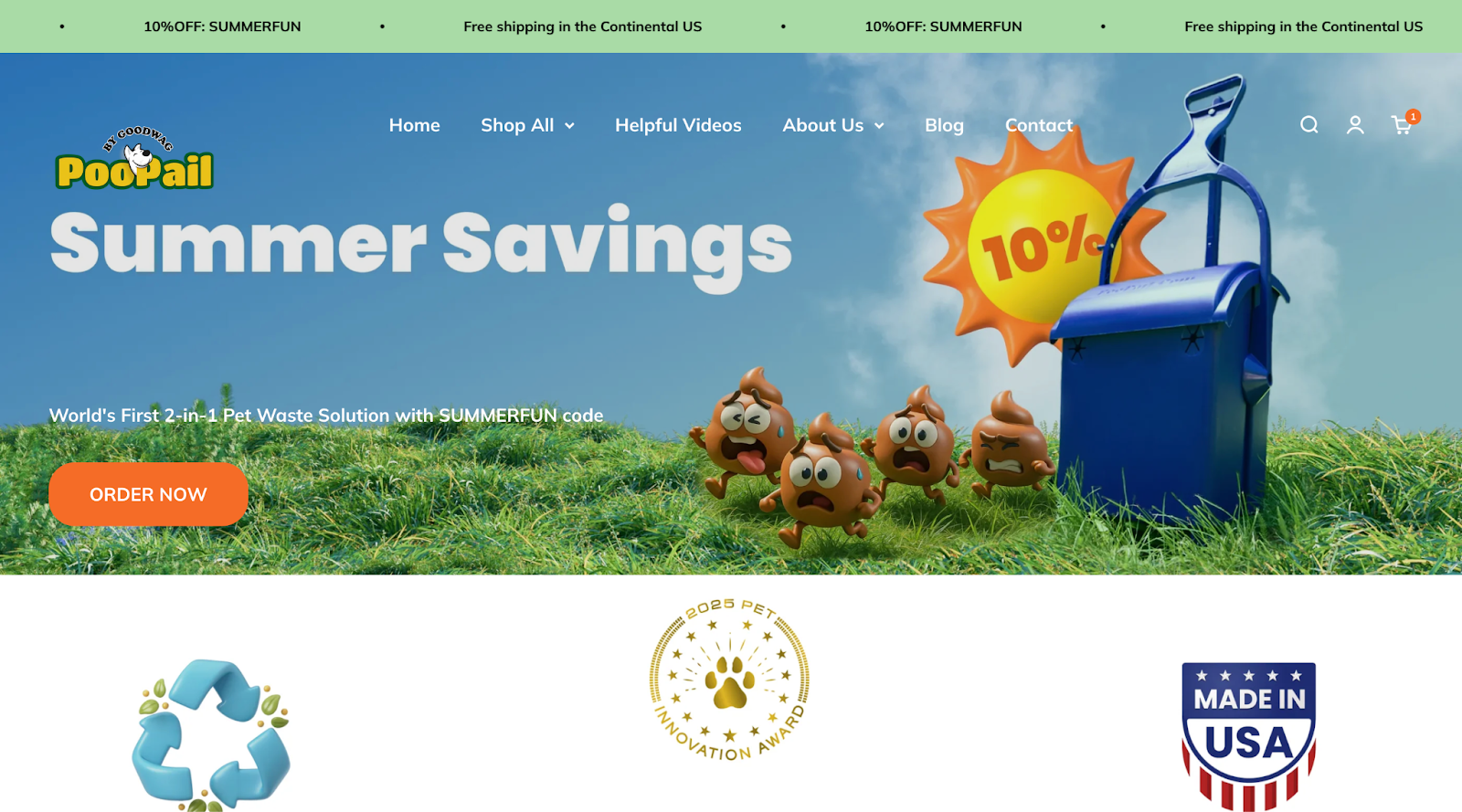
They repurposed the campaign’s polished videos, lifestyle photography, and glowing backer feedback for their website, ads, and social channels, which gave them immediate credibility in a crowded pet products market.
The result was a smooth handover from one-time crowdfunding sales to ongoing direct-to-consumer revenue.
GoChess is an AI-powered smart chessboard that blends traditional gameplay with cutting-edge technology. It lets players compete against AI at different difficulty levels, play online matches on a physical board, or train with interactive features that help improve skills.
The campaign launched in 2023 and raised over $4 million from 12,000+ backers, making it one of the biggest crowdfunding successes in the gaming category that year.
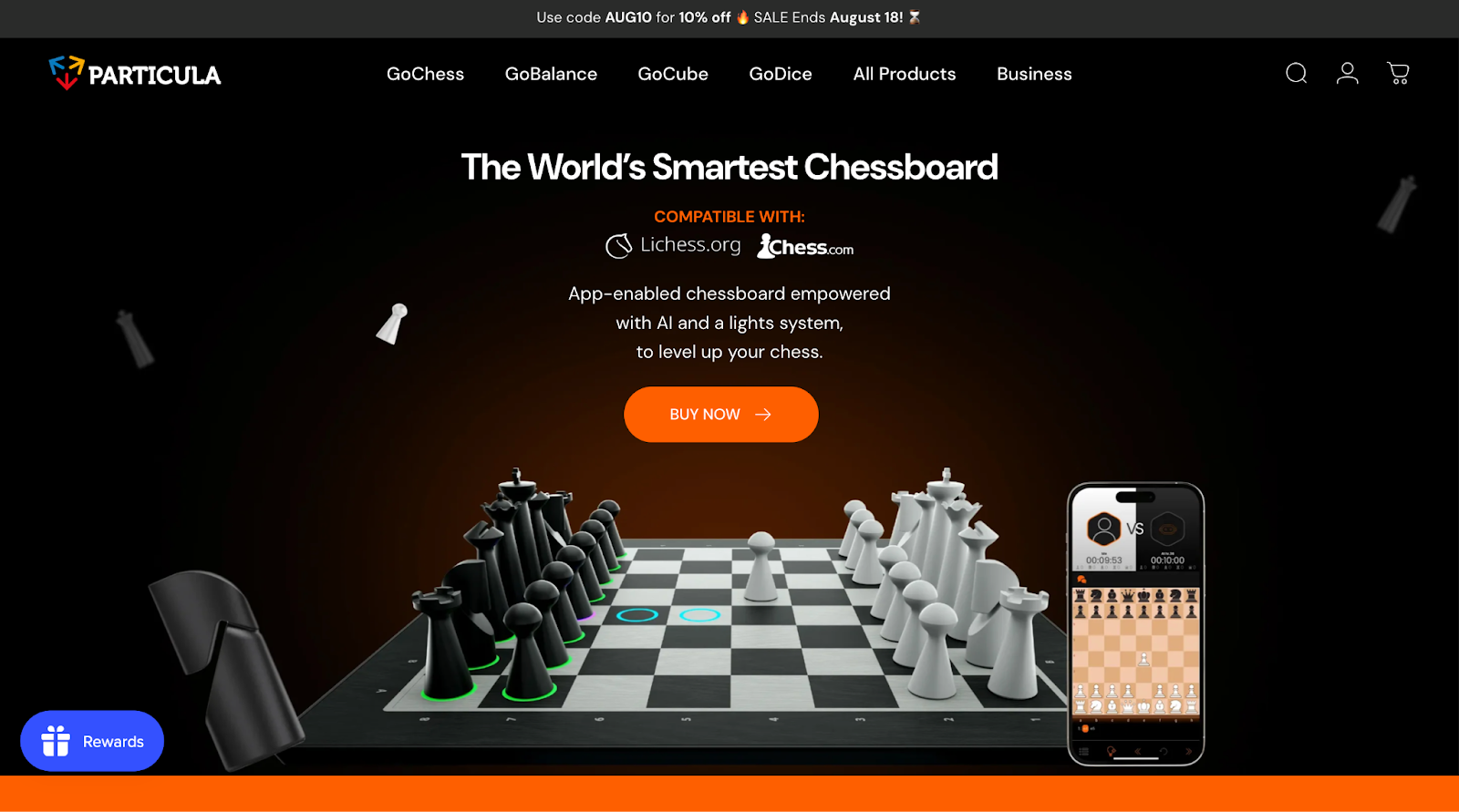
Post-campaign, the team transitioned into ecommerce by positioning GoChess not just as a one-time gadget, but as part of a broader smart gaming experience. They leveraged backer feedback and campaign assets to create a polished DTC store and expanded retail distribution through specialty gaming and electronics channels.
Their ability to keep backers engaged with software updates and online features, while also targeting a wider chess and gaming audience, turned GoChess into a brand that goes well beyond its crowdfunding origins.
Ferro & Company Watches
Ferro & Company makes distinctive, high-quality watches using Swiss and Japanese movements, with designs inspired by classic motorsport and aviation.
Over several crowdfunding campaigns, including their Le Mans–inspired racing watch, which alone raised more than $350,000 from 1,100 backers, they learned how to fine-tune product positioning, tell a compelling story, and run an efficient production cycle.
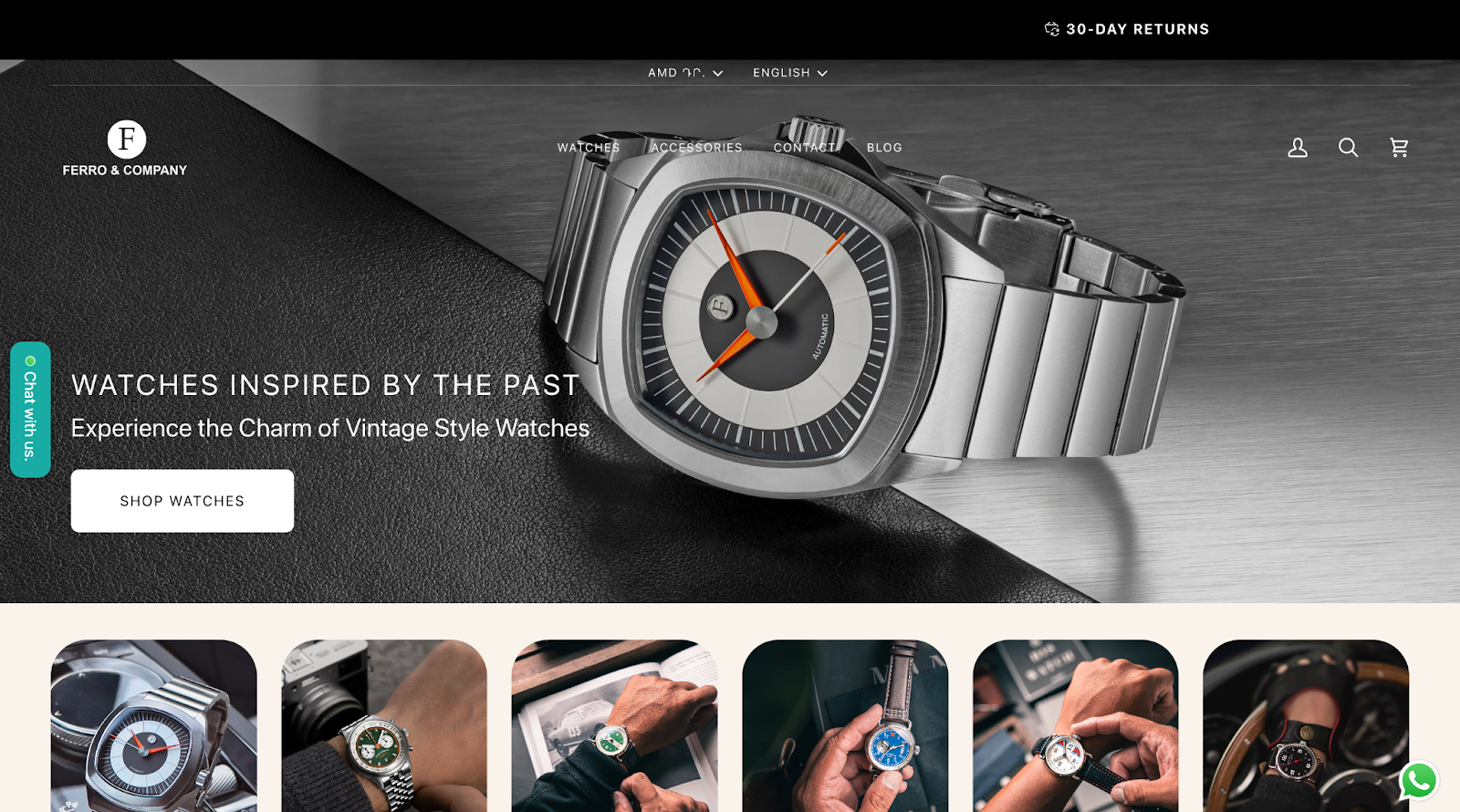
These skills became the foundation of a thriving ecommerce operation, where they now sell multiple watch collections along with complementary straps and accessories, reaching a much broader audience than crowdfunding alone could provide.
EnjoyTheWood
EnjoyTheWood is a Ukrainian brand known for its intricately designed wooden wall maps and other home décor items crafted from birch plywood.
Over the course of eight Kickstarter campaigns, they raised between $100,000 and $800,000 each time, building both brand awareness and a loyal international following.
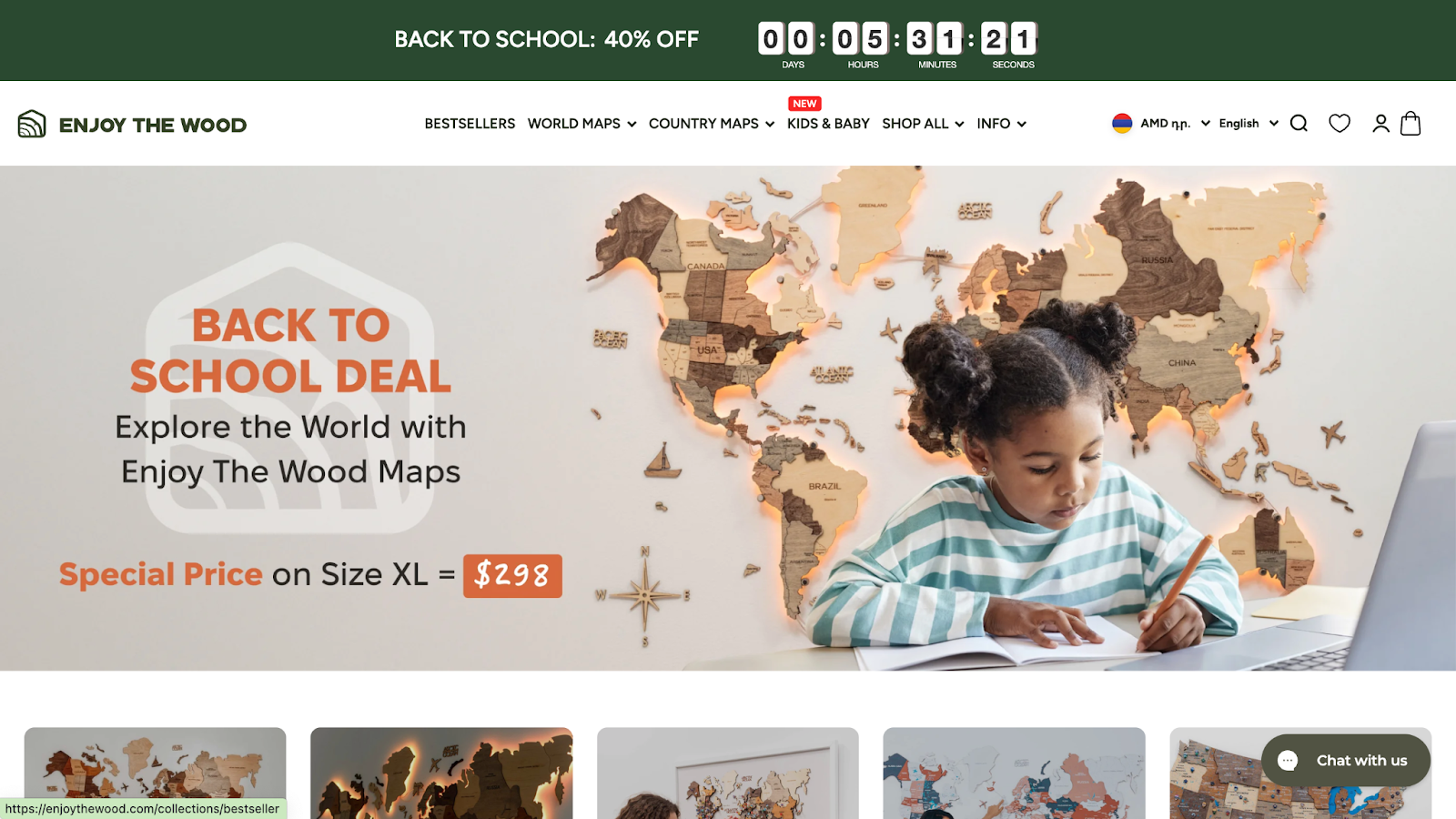
By the time they shifted their focus to ecommerce, they had a clear visual identity, a catalog of proven products, and a global customer base ready to buy again.
Today, they run a full-fledged online store shipping worldwide, proving how repeated crowdfunding campaigns can lay the groundwork for long-term retail success.
Conclusion
Crowdfunding proves your product has an audience. Ecommerce turns that proof into a business.
The transition works best when you treat your campaign as the launchpad for everything that comes next.
Deliver on promises, keep sales channels open, and build a store that converts. Stay in touch with backers, reach new customers through multiple channels, and strengthen your operations so you can scale without breaking momentum.
The brands that make this leap successfully use the assets, credibility, and customer base they’ve built to create a long-term engine for sales.
With the right plan in place, your campaign’s last update will be the beginning of your next chapter in growth.
[[cta5]]






.png)
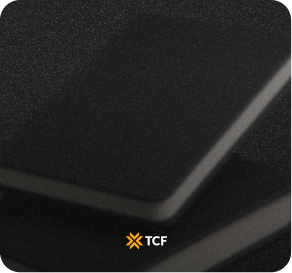

.png)


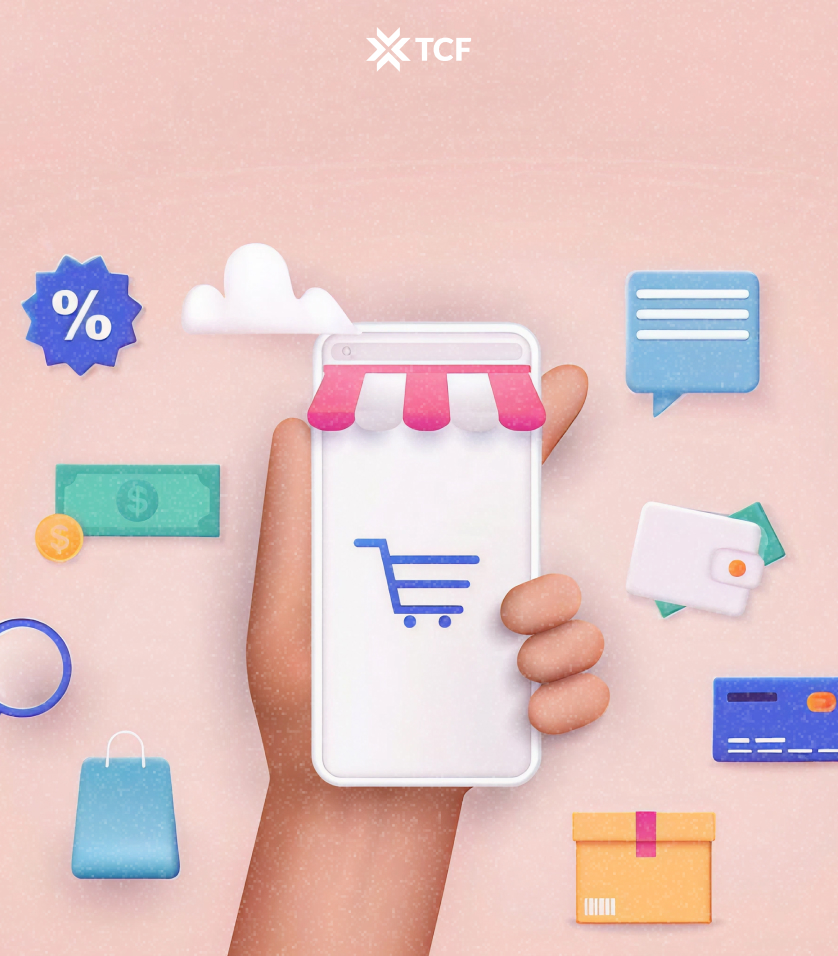
.jpg)
